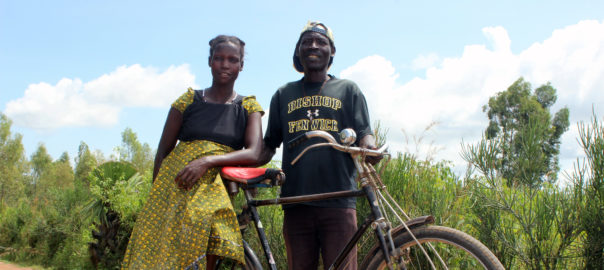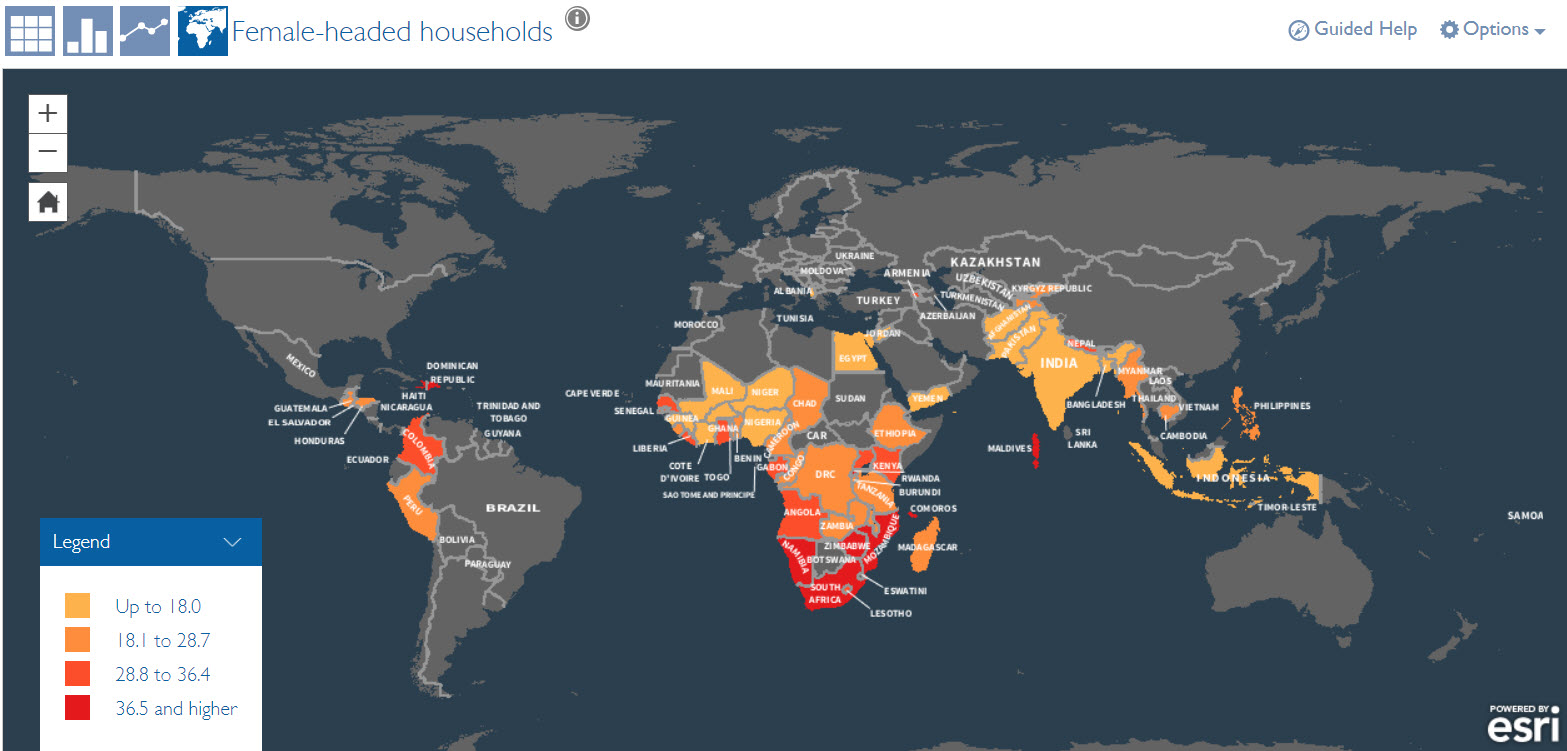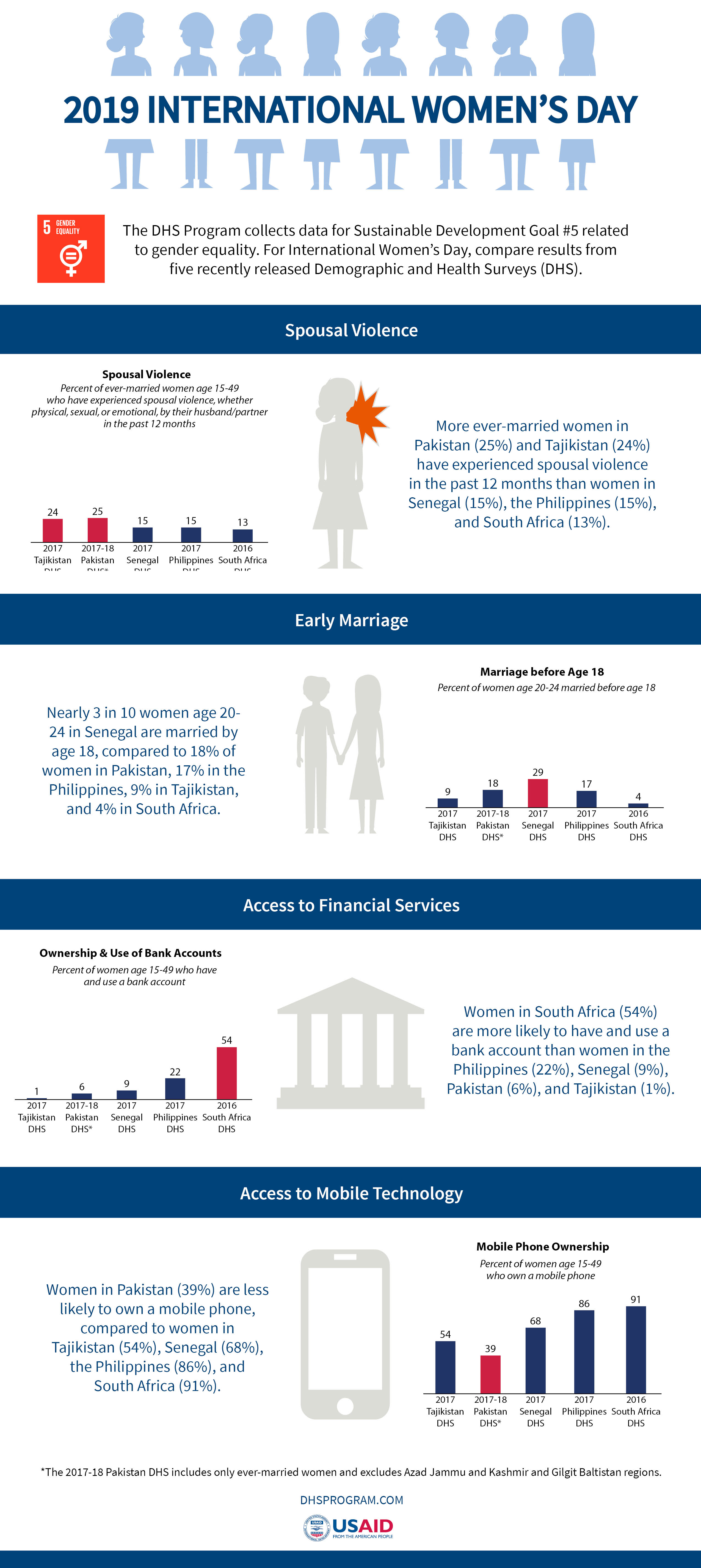International Women’s Day 2019

© 2016 Kato James, Courtesy of Photoshare
The DHS Program is now in its 35th year with a long history of helping to collect, analyze, and disseminate data on women’s empowerment, gender equality, men’s engagement, and gender-based violence within the context of health and development. Historically, The DHS Program has integrated attention to gender in all its activities and aspects of its operations, from the types of data collected and disaggregated and analyses conducted, and the “how” and the “who” of data collection, capacity strengthening, dissemination, and use.
Over the coming five years, The DHS Program will continue its cross-cutting approach to gender integration into its work and surveys. In particular, The Program will endeavor to help achieve the agency-wide commitments mandated by USAID’s Gender Equality and Female Empowerment Policy. The DHS Program supports USAID’s objectives and has adopted an updated Gender Integration Strategy with the following priorities:
- Continued collection of high-quality data for gender indicators and sex disaggregation: The project will continue to contribute to evidence-based, gender-integrated health programming by providing the data necessary for understanding gender disparities related to health, including disparities in wealth, access to resources, and decision making power. Similarly, it will continue to collect data on domestic violence; early marriage and skewed sex ratio; household headship; women’s relative earnings and control of their earnings; women’s ownership of a house, of land of a bank account, and of a mobile phone; as well as female genital cutting and fistula.
The DHS Program will monitor and respond to emerging needs for gender data important for women’s health and demographic behavior. The DHS Program is soliciting public feedback through March 15, 2019, on potential new areas/indicators/questions, including on the measurement of gender equality, male engagement, women’s empowerment, decision making, and domestic violence. This feedback will help identify some of the current gender-related data gaps.
- Increased focus of dissemination efforts to highlight gender disparities in health and resource and opportunity access: Data collected on gender and women’s empowerment are widely disseminated using digital, print, and other means. Most indicators are readily available on the STATcompiler, The DHS Program’s Mobile App, and the DHS API. The DHS Program website also maintains a “Gender” topic page, which provides a one-stop shop for gender indicators from DHS surveys.
- Enabling gender equality in access to opportunities, capabilities, learning, and resources: The DHS Program will continue its efforts to ensure that there is no discrimination by sex, pregnancy status, sexual orientation, or gender identity in access to opportunities for training, employment, and learning all along the survey continuum.
- By maintaining confidentiality and gender-sensitive protections. The DHS Program has strict ethical guidelines to protect respondents and interviewers and ensure confidentiality of respondents, their families, and of the data. While these guidelines apply to all respondents, they also specifically recognize the need for special protections for women in certain circumstances.
- By exploring technologies to ask highly sensitive questions: Several of the questions asked in DHS surveys are highly sensitive. While some of these sensitive questions are asked of both women and men, such as number of sexual partners, some others are mainly asked of women, including questions on experience of sexual violence. Improving the validity of responses to these questions remains a challenge for any survey program, and it is important to look for ways to both improve reporting and also provide respondents with a more secure platform to disclose sensitive information, such as audio computer assisted self-interviewing (ACASI).
- By continuing to integrate gender into the research agenda: The DHS Program’s research agenda continues to include innovative studies that shed light on the linkages between gender and health. The DHS Program will undertake many new research projects that will contribute to a better understanding of the level and changes in women’s empowerment and the interface between gender and health outcomes as well as gender disparities in health, while also applying a gender lens to analyses that do not directly involve gender indicators. In the meantime, read the latest gender analytical publications.
For International Women’s Day 2019, The DHS Program invites you to explore the wealth of gender-related resources and publications available at dhsprogram.com. Learn more about Sustainable Development Goal #5, Gender Equality indicators available in DHS surveys in the infographic below.



